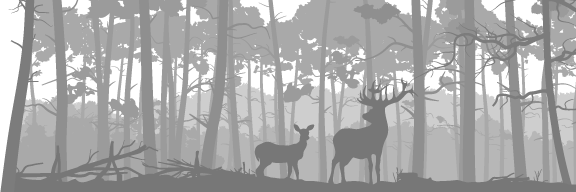Forest Stewardship Council (FSC)
In 2011, Chabot, Pomerleau & associés obtained, from the Rainforest Alliance, the certificate of Forest Stewardship Council (FSC), thus becoming the first private firm of consultants in forest management and environment to obtain this certification in Quebec and only the third in Canada to obtain this prestigious certification.
WHAT IS FOREST STEWARDSHIP COUNCIL (FSC)
The Forest Stewardship Council (FSC) is an international non-profit, organization established in 1993, to promote responsible management of the world’s forests. The FSC does this by setting standards on forest products, along with certifying and labelling them as eco-friendly.
The FSC’s stated mission is to “promote environmentally appropriate, socially beneficial and economically viable management of the world’s forests”. To this end the body has published a global strategy with five goals:
- Advancing globally responsible forest management.
- Ensure equitable access to the benefits of FSC systems.
- Ensure integrity, credibility and transparency of the FSC system.
- Create business value for products from FSC certified forests.
These goals are being promoted by activities which are managed and developed through six program areas: forests, chain of custody, social policy, monitoring and evaluation, quality assurance and ecosystem services.
It claims that forests managed to its standards offer benefits to both local and wider communities and these are said to include cleaner air and water, and a contribution to mitigating the effects of climate change.
Directly or indirectly, FSC addresses issues such as illegal logging, deforestation and global warming and some reports indicate positive effects on economic development, environmental conservation, poverty alleviation and social and political empowerment.
Using the FSC logo signifies that the product comes from responsible sources, environmentally appropriate, socially beneficial and economically viable. The FSC label is used in a wide range of timber and non-timber products from paper and furniture to medicine and jewellery, and aims to give consumers the option of supporting responsible forestry.
PRINCIPLE 9 – HIGH CONSERVATION VALUE (HCV)
There are six recognized forms of High Conservation Values:
- HCV 1. Species diversity.Concentrations of biological diversity, including endemic species, and rare, threatened or endangered species that are significant at global, national or regional levels.
- HCV 2. Landscape level ecosystems and mosaics.Intact Forest Landscapes and large landscape level ecosystems and ecosystem mosaics that are significant at global, national or regional levels, and that contain viable populations of the great majority of the naturally occurring species in natural patterns of distribution and abundance.
- HCV 3. Ecosystems and habitats,Rare, threatened, or endangered ecosystems, habitats or refugia.
- HCV 4. Critical ecosystem services.Basic ecosystem services in critical situations, including protection of water catchments and control of erosion of vulnerable soils and slopes.
- HCV 5. Community needs.Sites and resources fundamental to satisfying the necessities of local communities or Indigenous Peoples (for livelihood, health, nutrition, water, etc.), identified through engagement with these communities or Indigenous Peoples.
- HCV 6. Cultural values,Sites, resources, habitats and landscapes of global or national cultural, archaeological or historical significance, and/or critical cultural,ecological, economic or religions/sacred importance for the traditional cultures of local communities of Indigenous Peoples, identified through engagement with these local communities or Indigenous Peoples.
We present below two (2) maps concerning the territory of Chabot, Pomerleau & associés for the FSC forest certification, showing the HCV (High Conservation Value) concerned.
- Protected lands (HCV de category 1)
- Important bird areas (ZICO) (HCV category 1)
- Wildlife habitat (HCV category 1)
- Exceptional forest ecosystems (HCV category 3)
- Floristic occurrence (HCV category 1)
- Wildlife occurrence (HCV category 1)
- Areas with risk of erosion (HCV category 4)
- Important cultural site for the Indigenous Peoples (HCV category 6)
These two (2) maps are available to the public. If you wish to consult the details of the HCV, we invite you to contact us at (819 791-8668) or by e-mail cpa@chabotpomerleauass.com.






